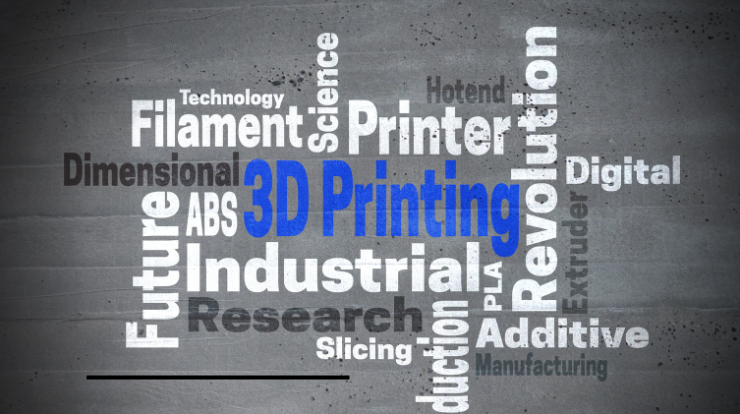3D Printing’s Impact on Wearable Tech Functionality
3D printing, also known as additive manufacturing, has revolutionized various industries by enabling the creation of complex structures with high precision. In the realm of wearable technology, 3D printing offers significant improvements in design, functionality, and customization.
This technology not only enhances the aesthetic appeal of wearables but also improves their performance and usability. This article explores how 3D printing can enhance the functionality of wearable technology, from personalized designs to advanced material use.
Customization and Personalization
One of the most significant advantages of 3D printing in wearable technology is the ability to create highly customized and personalized products. This customization ensures that wearable devices fit better, perform more efficiently, and meet the specific needs of individual users.
- Tailored Fit: 3D printing allows for the creation of wearables that perfectly match an individual’s body contours. This is especially beneficial for medical devices like orthotics, prosthetics, and hearing aids, where a precise fit is crucial for effectiveness and comfort.
- User-Specific Designs: Designers can easily modify wearable designs to cater to the preferences and requirements of different users. This includes adjustments in size, shape, and even aesthetic elements, leading to a more personalized user experience.
Rapid Prototyping and Iterative Design
The rapid prototyping capabilities of 3D printing are invaluable in the development of wearable technology. This allows designers to quickly create and test multiple iterations of a product, refining it for optimal performance and functionality.
- Speed to Market: Traditional manufacturing methods can be time-consuming and costly when developing prototypes. 3D printing significantly reduces lead times, allowing companies to bring products to market faster.
- Cost-Effective Development: The ability to rapidly prototype and iterate designs reduces the costs associated with product development. This enables companies to explore innovative designs and functionalities without the financial risk associated with traditional prototyping methods.
Integration of Advanced Materials
The use of advanced materials in 3D printing has expanded the possibilities for wearable technology. These materials can enhance the durability, flexibility, and overall performance of wearables, making them more functional and reliable.
- Flexible and Durable Materials: New 3D printing materials, such as flexible polymers and composites, ensure that wearables can withstand daily wear and tear while maintaining comfort. This is essential for devices that are worn continuously, like fitness trackers or medical monitors.
- Biocompatible Materials: For healthcare wearables, biocompatible materials are crucial. These materials are safe for prolonged skin contact, reducing the risk of irritation or allergic reactions. They are particularly important for devices like insulin pumps or continuous glucose monitors.
Complex Geometries and Lightweight Designs
3D printing allows for the creation of complex geometries that are often impossible or impractical with traditional manufacturing techniques. This capability is particularly advantageous for wearable technology, where compact and lightweight designs are essential.
- Enhanced Aesthetics and Functionality: Complex structures can be designed to enhance both the aesthetic appeal and functional performance of wearables. For example, intricate lattice structures can provide strength and flexibility while reducing weight.
- Weight Reduction: Lightweight designs improve user comfort, especially in wearables like smart glasses or hearing aids, where reducing bulk is crucial. 3D printing enables the creation of strong, yet lightweight components, improving the overall user experience.
Embedded Electronics and Smart Features
3D printing facilitates the integration of electronic components into wearable devices, enabling the creation of smart wearables with advanced functionalities.
- Integrated Sensors: 3D printing can embed sensors directly into the wearable device during the manufacturing process. This integration allows for continuous health monitoring, environmental sensing, and other smart features without adding bulk or complexity.
- Custom Electronics: The ability to customize the housing and layout of electronic components enhances the performance and reliability of smart wearables. This customization can lead to more efficient power management, better connectivity, and improved data accuracy.
Environmental and Sustainability Benefits
The sustainability of manufacturing processes is becoming increasingly important. 3D printing offers several environmental benefits that contribute to the overall functionality and sustainability of wearable technology.
- Material Efficiency: 3D printing is an additive process, which means that it builds objects layer by layer, using only the necessary material. This reduces waste compared to traditional subtractive manufacturing methods.
- Recyclable Materials: Many 3D printing materials are recyclable, contributing to a circular economy and reducing the environmental footprint of wearable technology production.
Future Prospects and Innovations
The future of 3D printing in wearable technology looks promising, with continuous advancements in materials, printing techniques, and design capabilities. Innovations such as multi-material printing and the development of smart materials are expected to further enhance the functionality of wearable devices.
- Multi-Material Printing: Combining different materials in a single print can create wearables with integrated electronic components, improving functionality and user experience.
- Smart Materials: The development of materials that change properties in response to stimuli like temperature or light could lead to wearables that adapt to the user’s environment or activities, offering new levels of interactivity and convenience.
Conclusion
3D printing is a game-changer in the wearable technology industry, offering unparalleled opportunities for customization, rapid development, and functional enhancements. By leveraging the capabilities of 3D printing, designers and manufacturers can create more effective, personalized, and sustainable wearable devices.
As the technology continues to evolve, it will undoubtedly play a crucial role in shaping the future of wearable technology, providing innovative solutions that meet the growing demands of consumers.




